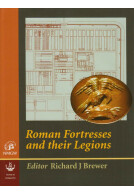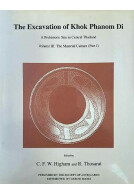Roman Mosaics of Britain, Volume IV (Hardback)
Western Britain
Imprint: Society of Antiquaries of London
Pages: 480
Illustrations: c.500 b/w & col photographs and line drawings
ISBN: 9780854312948
Published: 11th November 2010
Script Academic & Professional
Pages: 480
Illustrations: c.500 b/w & col photographs and line drawings
ISBN: 9780854312948
Published: 11th November 2010
Script Academic & Professional
You'll be £50.00 closer to your next £10.00 credit when you purchase Roman Mosaics of Britain, Volume IV. What's this?
+£4.99 UK Delivery or free UK delivery if order is over £40
(click here for international delivery rates)
Order within the next 6 hours, 23 minutes to get your order processed the next working day!
Need a currency converter? Check XE.com for live rates
(click here for international delivery rates)
Order within the next 6 hours, 23 minutes to get your order processed the next working day!
Need a currency converter? Check XE.com for live rates
This volume brings to a triumphant conclusion this monumental project to catalogue, describe and illustrate every Romano-British mosaic. The area covered by the fourth and final volume in the corpus is one of the richest regions of Britain in economic as well as architectural and artistic terms and this is reflected in the quantity and quality of the region's mosaics, which include the largest figured mosaic ever found in Britain - the Woodchester Orpheus pavement - which was perhaps the inspiration for the other famous Orpheus mosaics of the Roman Cotswolds. At the heart of this affluent region is Cirencester, Roman Britain's second largest town, represented here by more than sixty mosaics, the second-century examples being the most exquisite in the country. There are also many fine mosaics from the region's highly ornate villas, as well as from the towns of Gloucester, Caerwent and Wroxeter. The catalogue follows the format of earlier volumes in providing an account of each mosaic's discovery and locating the mosaic within its building plan. Following the description are notable parallels and major references. Many of the illustrations are by the authors, with additional ones by Luigi Thompson, as well as photographs and historical engravings, a high proportion of the latter by Samuel Lysons whose home was in Gloucestershire where he did much of his pioneering work in archaeological excavation and illustration. Brief biographies of Lysons and all the other artists whose work grace all four volumes appear at the end of this volume. As with previous volume the work is preceded with a substantial introduction. This deals with the history and topography of the region, buildings and rooms, an assessment of regional workshops, and schemes, ending with a consideration of mosaics in relation to the end of Roman Britain.
Customers who bought this title also bought...
Other titles in Society of Antiquaries of London...
















